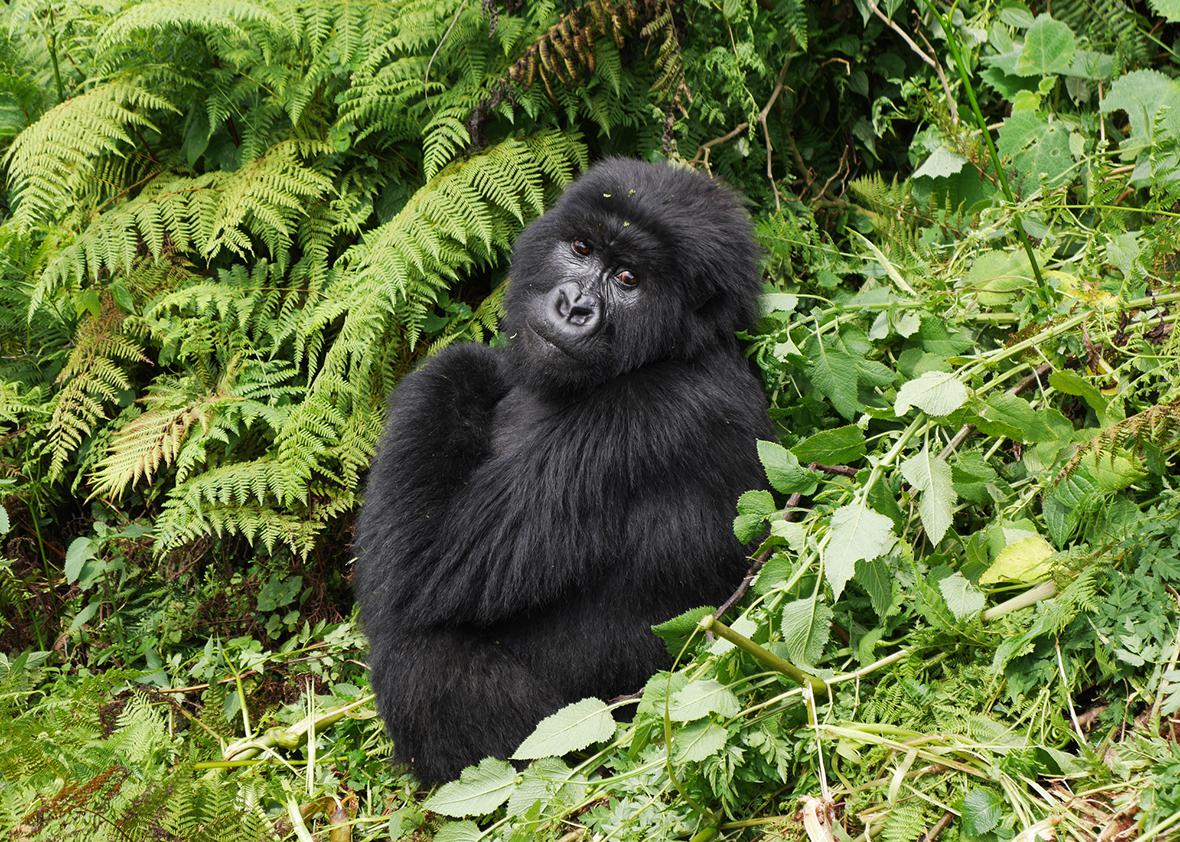The Cincinnati Zoo’s decision to shoot a 17-year-old gorilla named Harambe to save a 4-year-old child who fell into the enclosure Saturday has generated lots of channels of outrage. Primatologists are debating just how agitated the gorilla looked (pretty agitated). People who have most likely never taken care of several small children at once are arguing about just how negligent the boy’s mother was (probably not negligent). And animal rights activists are surfacing in great numbers to demand justice for the gorilla.
Sure, the safety of the barricade should be investigated, and apparently the Cincinnati police are on the case. But a Change.org petition that wrongly blames parental neglect has more than 300,000 signatures, while a Justice for Harambe Facebook page has more than 100,000 likes. Another Change.org petition (also more than 100,000 signatures) proposes that we create “Harambe’s Law,” which would create “legal consequences when an endangered animal is harmed or killed due to the negligence of visitors.”
But let’s not pretend that what happened to Harambe somehow illuminates the broader threat to gorillas as a species. Perhaps we should be more willing to investigate what caused these apparently beloved animals to reach the point of critical endangerment in the first place.
Harambe was a western lowland gorilla, one of two subspecies of the western gorilla, which is on the International Union for Conservation of Nature’s “Red List of Threatened Species” as critically endangered. The IUCN attributes the western gorilla’s listing there to the steep population decline (80 percent) that the species has seen over just three generations. The two main factors causing the decline: hunting and disease-induced mortality (namely, Ebola).
Yes, Harambe was part of the Gorilla Species Survival Plan, a group that aims to conserve and study captive gorillas. But the survival of this species in the long run depends not on any one individual, but rather on creating a healthy population that is able to reproduce at a sustainable rate and live in habitats that provide them with reliable food sources. We should look at Harambe’s death as an unfortunate consequence of what essentially amounts to a freak accident and invest the time and money being spent mourning him into doing things that actually matter for gorilla survival. Unfortunately, these things—preserving their habitats, stopping poaching, slowing climate change—are much more difficult and complex endeavors than advocating that child protective services investigate whether the 4-year-old’s parents acted negligently.
But if the online outrage so far is any indication—or, in case we’ve forgotten, the weeks of full-volume rebellion that followed the shooting of Cecil the lion last summer—we won’t. As human beings, we are primed to confront issues on the individual scale, not on the population scale. It’s comforting, because as individuals ourselves, it makes us feel like we matter. But it’s not how nature works. Nature is, by our standards, cruel in how little it cares about individuals. This is hard for us to grasp, so when we see something that our brains register as tragic, like the preventable death of one beloved gorilla, we freak out.
Gorillas are regularly sacrificed on the altar of human misdeed, but those deaths are vague and impersonal, involving long-standing custom and large-scale anthropogenic trends. They don’t get coverage on the local news. They seem inevitable and even natural in the way that the death of a single gorilla on constant public view does not. It is easier to be outraged when there appear to be discrete individuals to blame, and we are not among them.
Unfortunately, with respect to gorillas’ potential to survive in the wild one day, we are indeed the culprits. Even if we were able to rein in threats from hunting and Ebola, “under the most optimistic scenarios, population recovery would require on the order of 75 years (Walsh et al. 2003),” the IUCN notes. “Much sooner, perhaps 20 to 30 years into the future, habitat loss and degradation from agriculture, timber extraction, mining, and possibly climate change will become a major threat.”
We all hold collective responsibility for habitat destruction, for resource exploitation, for climate change. We all have created a world that satisfies our needs first and considers the needs of nature and animals second. It is not as visceral a consideration as if we ourselves were pulling the trigger, but it is our collective lifestyle that has endangered the gorilla and that has created a situation in which its recovery feels unlikely. But this is messy. This does not lend itself to scathing tweets about how a gorilla’s parenting skills may be better than some human’s. This forces us to take some of the blame.
Harambe’s name is derived from the Swahili word harambee—which translates roughly to “pull together.” A better way to honor this creature’s legacy would be to take the lesson of his name and do so for the rest of his kind—not to pass a toothless law in his honor to make us feel momentarily better.
